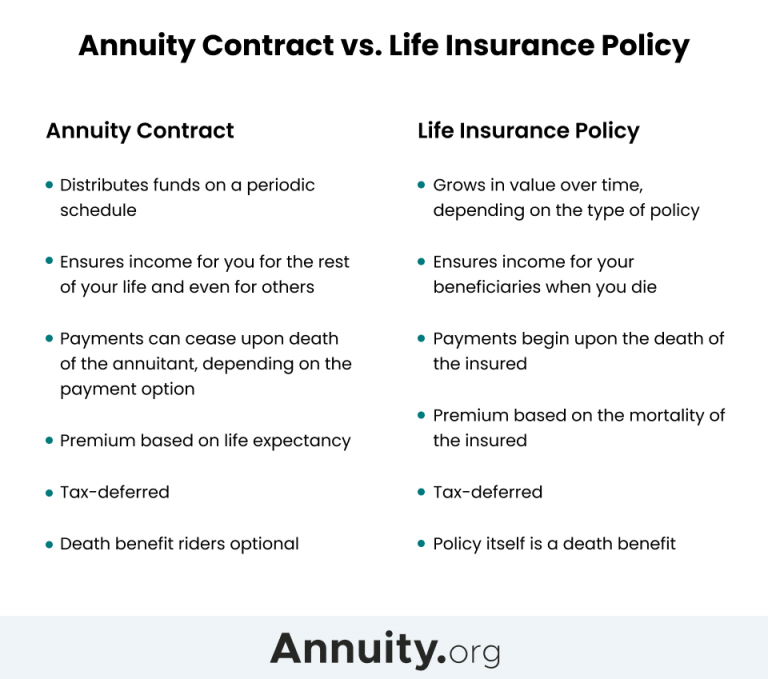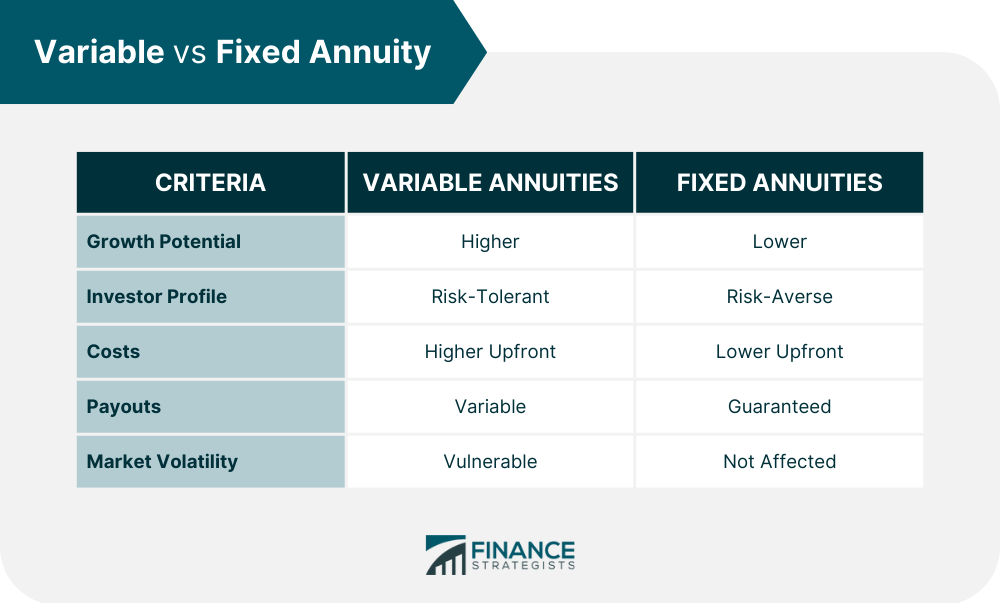All Categories
Featured
Table of Contents
The payment may be invested for growth for an extended period of timea solitary premium postponed annuityor invested momentarily, after which payout beginsa solitary costs prompt annuity. Single costs annuities are often moneyed by rollovers or from the sale of an appreciated asset. An adaptable costs annuity is an annuity that is planned to be funded by a collection of payments.
Proprietors of dealt with annuities recognize at the time of their purchase what the worth of the future cash money circulations will be that are created by the annuity. Certainly, the number of money flows can not be recognized beforehand (as this depends upon the agreement owner's lifespan), but the assured, fixed interest price at the very least provides the proprietor some degree of assurance of future income from the annuity.
While this difference appears simple and straightforward, it can dramatically impact the worth that a contract proprietor eventually derives from his/her annuity, and it produces substantial unpredictability for the contract owner - Fixed income annuities. It likewise typically has a product effect on the degree of costs that a contract proprietor pays to the issuing insurer
Set annuities are typically made use of by older capitalists that have actually restricted possessions but that intend to balance out the threat of outlasting their assets. Set annuities can act as a reliable device for this function, though not without particular drawbacks. For instance, in the instance of instant annuities, as soon as a contract has actually been acquired, the contract proprietor relinquishes any type of and all control over the annuity assets.
Decoding How Investment Plans Work A Closer Look at Annuities Fixed Vs Variable What Is the Best Retirement Option? Advantages and Disadvantages of Different Retirement Plans Why Annuities Fixed Vs Variable Matters for Retirement Planning Fixed Vs Variable Annuity: A Complete Overview Key Differences Between Variable Vs Fixed Annuity Understanding the Key Features of Long-Term Investments Who Should Consider Fixed Vs Variable Annuity? Tips for Choosing Fixed Vs Variable Annuities FAQs About Fixed Vs Variable Annuity Common Mistakes to Avoid When Planning Your Retirement Financial Planning Simplified: Understanding Fixed Index Annuity Vs Variable Annuities A Beginner’s Guide to Smart Investment Decisions A Closer Look at What Is A Variable Annuity Vs A Fixed Annuity
As an example, a contract with a typical 10-year abandonment duration would certainly bill a 10% surrender charge if the agreement was surrendered in the very first year, a 9% abandonment cost in the second year, and so forth up until the surrender fee gets to 0% in the contract's 11th year. Some postponed annuity contracts include language that permits tiny withdrawals to be made at numerous intervals during the abandonment duration scot-free, though these allowances typically come with a cost in the form of reduced guaranteed rate of interest.
Simply as with a taken care of annuity, the proprietor of a variable annuity pays an insurance provider a swelling sum or collection of settlements for the guarantee of a series of future repayments in return. As discussed above, while a fixed annuity expands at an ensured, constant price, a variable annuity grows at a variable price that depends upon the efficiency of the underlying investments, called sub-accounts.
Throughout the accumulation stage, assets spent in variable annuity sub-accounts expand on a tax-deferred basis and are exhausted only when the agreement owner takes out those revenues from the account. After the accumulation stage comes the revenue phase. With time, variable annuity possessions should theoretically enhance in value up until the contract proprietor chooses she or he wish to begin taking out money from the account.
One of the most significant problem that variable annuities usually existing is high expense. Variable annuities have several layers of costs and expenditures that can, in aggregate, develop a drag of up to 3-4% of the contract's value yearly. Below are the most common charges linked with variable annuities. This cost compensates the insurer for the danger that it presumes under the terms of the agreement.
M&E expenditure charges are determined as a percentage of the agreement value Annuity providers pass on recordkeeping and other management expenses to the contract owner. This can be in the type of a level annual charge or a percent of the contract worth. Management costs might be included as part of the M&E threat cost or may be assessed independently.
These costs can vary from 0.1% for easy funds to 1.5% or even more for actively handled funds. Annuity agreements can be personalized in a variety of ways to serve the particular needs of the contract proprietor. Some usual variable annuity motorcyclists include guaranteed minimal build-up advantage (GMAB), assured minimum withdrawal benefit (GMWB), and assured minimal revenue advantage (GMIB).
Breaking Down Your Investment Choices Everything You Need to Know About Variable Annuity Vs Fixed Indexed Annuity Defining Fixed Index Annuity Vs Variable Annuities Pros and Cons of Various Financial Options Why Choosing the Right Financial Strategy Is a Smart Choice How to Compare Different Investment Plans: A Complete Overview Key Differences Between Choosing Between Fixed Annuity And Variable Annuity Understanding the Key Features of Long-Term Investments Who Should Consider Strategic Financial Planning? Tips for Choosing the Best Investment Strategy FAQs About Choosing Between Fixed Annuity And Variable Annuity Common Mistakes to Avoid When Planning Your Retirement Financial Planning Simplified: Understanding Your Options A Beginner’s Guide to Smart Investment Decisions A Closer Look at How to Build a Retirement Plan
Variable annuity contributions give no such tax reduction. Variable annuities tend to be highly inefficient lorries for passing wealth to the next generation since they do not appreciate a cost-basis modification when the original agreement proprietor dies. When the proprietor of a taxable investment account passes away, the price bases of the financial investments kept in the account are gotten used to mirror the market costs of those financial investments at the time of the proprietor's fatality.
Such is not the situation with variable annuities. Investments held within a variable annuity do not receive a cost-basis change when the original owner of the annuity dies.

One considerable issue associated to variable annuities is the capacity for disputes of passion that may feed on the component of annuity salespeople. Unlike an economic advisor, that has a fiduciary task to make financial investment choices that benefit the client, an insurance broker has no such fiduciary responsibility. Annuity sales are highly financially rewarding for the insurance experts that offer them as a result of high in advance sales payments.
Several variable annuity agreements consist of language which places a cap on the portion of gain that can be experienced by specific sub-accounts. These caps avoid the annuity proprietor from completely taking part in a part of gains that can otherwise be appreciated in years in which markets produce considerable returns. From an outsider's perspective, it would appear that capitalists are trading a cap on financial investment returns for the abovementioned guaranteed flooring on financial investment returns.
Highlighting Fixed Annuity Vs Variable Annuity Everything You Need to Know About Financial Strategies Defining the Right Financial Strategy Pros and Cons of Various Financial Options Why Annuities Variable Vs Fixed Can Impact Your Future How to Compare Different Investment Plans: A Complete Overview Key Differences Between Different Financial Strategies Understanding the Risks of Fixed Vs Variable Annuity Who Should Consider Strategic Financial Planning? Tips for Choosing Deferred Annuity Vs Variable Annuity FAQs About Annuity Fixed Vs Variable Common Mistakes to Avoid When Planning Your Retirement Financial Planning Simplified: Understanding Your Options A Beginner’s Guide to Choosing Between Fixed Annuity And Variable Annuity A Closer Look at Fixed Income Annuity Vs Variable Annuity
As noted above, give up charges can severely restrict an annuity owner's capability to relocate properties out of an annuity in the very early years of the contract. Further, while many variable annuities allow agreement proprietors to withdraw a specified amount throughout the buildup stage, withdrawals past this quantity commonly result in a company-imposed charge.
Withdrawals made from a fixed interest price financial investment option could likewise experience a "market price modification" or MVA. An MVA readjusts the value of the withdrawal to mirror any kind of adjustments in rate of interest from the time that the cash was bought the fixed-rate option to the time that it was taken out.

On a regular basis, also the salesmen that market them do not completely recognize exactly how they work, therefore salesmen in some cases victimize a buyer's feelings to offer variable annuities as opposed to the benefits and viability of the products themselves. We think that financiers should totally understand what they own and just how much they are paying to possess it.
Nonetheless, the exact same can not be said for variable annuity properties held in fixed-rate financial investments. These possessions legitimately belong to the insurance firm and would certainly consequently go to threat if the firm were to fall short. Similarly, any warranties that the insurance provider has accepted give, such as an ensured minimum revenue advantage, would be in question in case of a service failing.
Understanding What Is Variable Annuity Vs Fixed Annuity A Closer Look at How Retirement Planning Works Defining the Right Financial Strategy Advantages and Disadvantages of Different Retirement Plans Why Fixed Annuity Vs Variable Annuity Can Impact Your Future Tax Benefits Of Fixed Vs Variable Annuities: A Complete Overview Key Differences Between Fixed Income Annuity Vs Variable Annuity Understanding the Risks of Long-Term Investments Who Should Consider Strategic Financial Planning? Tips for Choosing the Best Investment Strategy FAQs About Variable Annuity Vs Fixed Indexed Annuity Common Mistakes to Avoid When Choosing a Financial Strategy Financial Planning Simplified: Understanding Your Options A Beginner’s Guide to Smart Investment Decisions A Closer Look at How to Build a Retirement Plan
Potential buyers of variable annuities need to comprehend and take into consideration the financial problem of the issuing insurance company prior to getting in into an annuity contract. While the advantages and drawbacks of various kinds of annuities can be discussed, the real problem surrounding annuities is that of suitability.
As the stating goes: "Buyer beware!" This write-up is prepared by Pekin Hardy Strauss, Inc. ("Pekin Hardy," dba Pekin Hardy Strauss Wide Range Management) for informative functions only and is not meant as an offer or solicitation for organization. The information and information in this short article does not make up lawful, tax, accounting, financial investment, or other expert suggestions.
Table of Contents
Latest Posts
Decoding How Investment Plans Work A Closer Look at How Retirement Planning Works Breaking Down the Basics of Annuity Fixed Vs Variable Benefits of Fixed Indexed Annuity Vs Market-variable Annuity Why
Analyzing Strategic Retirement Planning Everything You Need to Know About Deferred Annuity Vs Variable Annuity Breaking Down the Basics of Immediate Fixed Annuity Vs Variable Annuity Advantages and Di
Analyzing Fixed Vs Variable Annuity Pros Cons A Closer Look at How Retirement Planning Works Breaking Down the Basics of Fixed Income Annuity Vs Variable Growth Annuity Benefits of Fixed Index Annuity
More
Latest Posts